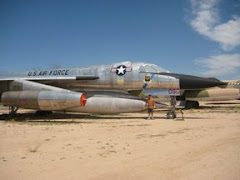In 1959, the new submarine Triton was commissioned into the Navy. This ship would become world famous quickly. She was of a unique design and pushed the boundaries of submarine performance.
Designed as a radar picket, she was intended to range ahead of the fleet watching for air attacks. For this she needed high surface-speed and was given a knife-like bow. She also had two reactors...the only US submarine so fitted. She was so long that her bow blocked the shipyard railway and her stern section was built in a second slipway and attached prior to launch. Her conning tower was 74 feet long and 21feet longer than the US Navy's first submarine, USS Holland SS-1. Her maximum surface speed was found to be over thirty knots on trials, faster than carrier task forces generally operated. By 1961 she had been re-designated an Attack (SSN) sub. Though she retained the radar that had been installed for her radar picket role and she was able to complement any force she was assigned to with this additional air-search radar.
As with other submarine designs in the mid to late fifties she was put to other uses than intended. Her first mission was to circumnavigate the world under water (Yes, her maiden voyage was to steam around the world submerged, no tall orders or anything). This record breaking statement of US submarine capabilities was an impressive first, it also told the Soviets what the US was capable of.
She was captained by the famous submarine author and WWII veteran Captain Edward L. Beach. Her world tour under water, took 84 days to complete.
She was the last sub fitted with an aft torpedo room and the last sub to have a conning tower (with a separate pressure-hull within it). She was also the last sub with two propellers.
She was decommissioned in 1969, and sat in the Bremerton retired sub fleet for years. Finally, in 2007 she was dry-docked for the last time. A little over two years later the job was done and she had been "recycled." all that remains are memories, stories and the conning tower.
Where is her conning tower, you ask? Well, it resides now, on a concrete plinth, overlooking the Columbia River. She is there to memorialize submariners and in recognition of the numerous reactor cores from other retired submarines that have been offloaded from the Port of Benton Barge Slip and which are stored permanently on the Hanford Nuclear Reservation.
If you are interested in seeing the sail of this awesome sub with such an impressive history and you live in Washington State, or are visiting the Richland-Pasco-Kennewick area, it's not hard to find! Any way you cut it, you'll probably approach the area from the South.
Take 240 North from the Tri-Cities until you have the choice of taking Stevens Drive or following 240. Go straight on Stevens Drive. Keep going until you come to a tree-lined boulevard, this is Battelle Boulevard, turn right onto it. Follow this road until you come to a stop light. This is George Washington Way. Take a left on George Washington Way. Go north until you get to 11th Street and take a right. USS Triton's conning tower is about a block down on the left! Alternatively you could take George Washington Way all the way from Richland, but that is a much slower way.
Here are some things you might like to know about the sub:
Laid Down on May 29, 1956
Launched August 19, 1958
Commissioned November 10, 1959
Decommissioned May 3, 1969
Length 447 feet
Beam 37 feet
Maximum speed:
30+ knots surfaced
27+ knots submerged
Displacement:
7,773 tons submerged
5,963 tons surfaced
Armament:
6X 21" torpedo tubes (2 aft, 4 forward)
Propulsion:
2X S4G nuclear reactors
2X 5 bladed props
She was awarded the Navy Unit Citation and the Presidential Unit Citation.
Links and sources:
Navsource
http://www.navsource.org/archives/08/08586.htm
USS Triton site
http://garrygray.tripod.com/triton_home_page.htm
Navy's Triton site
http://navysite.de/ssn/ssn586.htm

